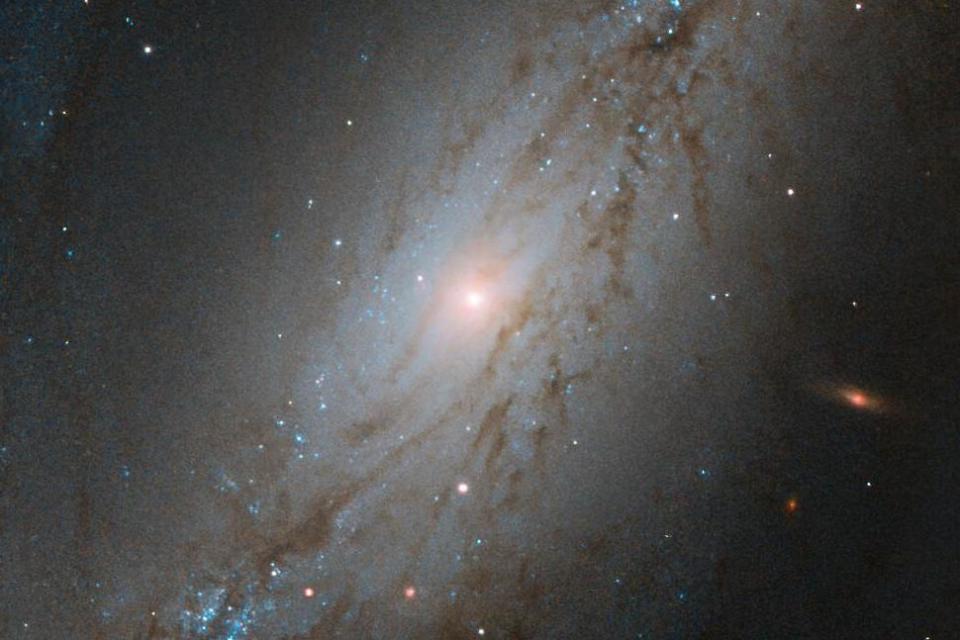Hubble Space Telescope snaps galaxy zipping away from Earth at 3 million mph

This stunning new image from the Hubble Space Telescope shows a galaxy much like our own zooming through space at nearly 3.5 million miles per hour.
The shot was taken 60 million light-years away in deep space.
Due to the way the universe is expanding, the galaxy appeared to be picking up speed as it moved away from our Milky Way galaxy.

The accelerating galactic structure, called NGC 7513, was calculated to be travelling 1,564 kilometres per second (972 miles per second) and will contain its own planetary systems.
For comparison, the Earth orbits our sun at 67,108mph.
It is known as a barred spiral galaxy, which has a bar-shaped pattern in the centre made up of stars, and can be found in the Southern Hemisphere's Sculptor constellation.

NGC is the abbreviation for New General Catalogue of Nebulae and Clusters of Stars.
A spokesman for Nasa’s and the European Space Agency's Hubble project said: “While some galaxies, like the Milky Way and the Andromeda galaxy, are caught in each other’s gravitational pull and will eventually merge together, the vast majority of galaxies in our universe appear to be moving away from each other.
“This phenomenon is due to the expansion of the universe, and it is the space between galaxies that is stretching, rather than the galaxies themselves moving.”
The rapid rate of the universe’s expansion has been one of Hubble’s biggest discoveries in the past 30 years as it orbits about 350 miles above Earth’s surface.
After the giant mirrored space telescope was launched into space in 1990, scientists were able to calculate that the universe was about 13.7 billion years old.
Hubble's observations in the past month have also included a “feathered” spiral galaxy called NGC 2275 located 67 million light years away in the constellation of Cancer, which consists of millions of young, blue stars.
Other new images showed nearby fast-evolving young star formations called NGC 7027 and NGC 6302, known as planetary butterfly nebulae, were also captured inside the Milky Way, about 3,800 light-years away in the constellation of Scorpius.
They were discovered in the 19th Century but now show bright turquoise and pink-hued glowing gasses that were once the outer layers of stars, which have been expelled over the past 2,200 years.
Read more
Stunning space images mark Hubble Telescope's 30th anniversary
Saturn's rings shine in breathtaking new Nasa Hubble portrait
Hubble telescope captures pitch black planet that 'eats light'
Grinning galaxy captured by the Hubble Space Telescope


